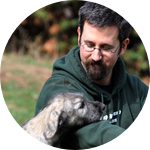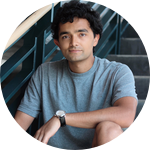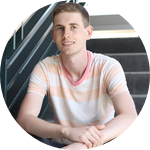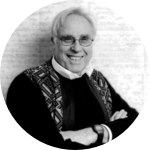Project Results
We are sharing a summary of the work that was produced with the funding raised on Experiment.com. This summary is not the final summary, rather we drew a line to separate the proposed body of work from a subsequent set of data that was generated based on the lessons learned. This current data set may appear to suggest that we did not identify a suitable reagent for preserving human diploid fibroblasts in a dry state at room temperature. However, we have exciting data that we are nearly finished analyzing. Expect to see a final paper by the end of July, as we will upload a copy of the final data.
About This Project
There are two routine ways to preserve tissues: formalin-fixed paraffin-embedded preservation (FFPE) and cryopreservation. FFPE allows for long-term storage at room temperature, but damages DNA and RNA. Cryopreservation preserves nucleic acids, but is costly over many years. We took inspiration from tardigrades, which survive long periods of desiccation and developed a new preservation method. We hypothesize that method will allow for the long-term storage of tissue at room temperature.
Ask the Scientists
Join The DiscussionWhat is the context of this research?
Today tissues are preserved in formaldehyde or formalin. The current methods are great at maintaining cell structure at room temperature, but are terrible at maintaining cellular proteins and nucleic acids. The alternative method of flash-freezing tissues stores in a freezer or in liquid nitrogen. The downside is cell structures sustain significant damage and suffer the risk of power outages or liquid nitrogen evaporation, leading to unexpected thaws.
We propose a preservation method that allows for long-term dry storage of biospecimens while maintaining nucleic acid and protein integrity. Our method is inspired by organisms like brine shrimp and tardigrades that survive long periods of desiccation.
What is the significance of this project?
We depend on FFPE preservation to store biospecimens at room temperature. This method allows for samples to be analyzed years later by immunohistochemistry (IHC), an important diagnostic method. The challenge is that FFPE damages the cells, fragmenting DNA and RNA, and denatures proteins rendering the sample incompatible with more modern analytic methods.
We will test a new preservation reagent that we hypothesize protects samples for long term storage at room temperature. If successful, this new method could preserve cells that are compatible with IHC and sequencing of nucleic acids.
What are the goals of the project?
We have tested an experimental reagent that can preserve lab grown cell cultures for 48 hours. Our hypothesis is that our preservation method, which preserves cell cultures in dry condition at room temperature, is more shelf stable than cryopreservation and more efficient in keeping nucleic acids intact than FFPE. This new method would be invaluable for field-work settings where formalin-fixation or cryopreservation cannot be accommodated. To test this hypothesis we will preserve cell cultures using the experimental method for time points ranging from 1 week to 3 months. Samples will be examined for DNA, RNA, and protein integrity and compared to the same cell cultures preserved with cryopreservation and FFPE.
Budget
Our team is well equipped with the skills necessary to complete this project. We lack, however, funding for our initial experiments. Our $2500 budget is for supplies and reagents needed to compare our preserved cells to fresh samples, as well as to samples that have been preserved with the gold standard methods FFPE and a commercial reagent known as “RNALater”.
For this project, we will compare the overall integrity of DNA, RNA, and protein fractions of our preserved samples. Our initial methods will include well established techniques such as agarose and polyacrylamide gel electrophoresis. This technique gives us a visual output to see if the DNA, RNA, or proteins have degraded. We will also perform qRT-PCR to compare gene expression markers, including “housekeeping genes”.
All funds raised will be used for items that are essential to generate preliminary results that would justify an application for more extensive research grant support.
Endorsed by
 Project Timeline
Project Timeline
Set up preservation samples for our test reagent and controls in groups of 4 replicates each. Harvest each set:
1) 1 week
2) 1 month
3) 2 months
4) 3 months
Each time point will be examined for DNA, RNA and protein. Gels will provide a visual integrity read out. The concentration will be determined by Nanodrop or Qubit. Expression levels will be measured by qRT-PCR (RNA) or western blot (protein).
Sep 19, 2018
Project Launched
Oct 12, 2018
Harvest 1 week preservation
Nov 05, 2018
Harvest 1 month preservation
Dec 05, 2018
Harvest 2 month preservation
Jan 05, 2019
Harvest 3 month preservation
Meet the Team
Affiliates
Team Bio
Our team includes three undergraduate researchers, a research scientist, and an emeritus professor. The undergraduate researchers are testing their ability to design experiments, test their hypothesis, and analyze their data. The research scientist is available to direct daily questions and help navigate hurdles, while the senior researcher is the ultimate guide through the maze of exploration and understanding pathology.
Sidharth Shankar
I am a senior at the University of Washington studying microbiology with a passion for medicine and the technologies that allow us to live longer, healthier lives. This project is important to me because the current methods of cell and tissue preservation are outdated and do not allow for the best understanding of cellular biology. This is important for not only laboratory samples that we want to save, but also for patient tumor samples that are being saved for future analysis. Developing a new, effective and inexpensive means of preserving patient samples signals to me the true mission of medicine; to replace uncertainty and doubt with definitive, fact based science. As a senior undergraduate researcher, my main aims are to develop the project from start to finish; this involves raising the funds to do the proposed experiments, developing and executing protocols, analyzing data, and finally writing a paper about my results. The experience so far has been invaluable in advancing my scientific knowledge and the project's completion will certainly aid me on my path to higher education.
Shreya Roy
I am currently completing the final year of my undergraduate degree in Microbiology at the University of Washington. I love the field and would like to integrate it with my passion for working with patients and their families. Upon graduating, I want a career in health care where I can bridge the gap between health care providers and the patients they treat. As a senior undergraduate researcher my role is not only to serve as an extra set of hands for my team, but also oversee the logistics of the project. Finding a preservation technique that would keep cellular components like nucleic acids and proteins in native structure for the long term opens doors to other advancements in medicine. For example, better preservation technology will improve diagnostics of biopsy samples and provide opportunity for secondary analysis of an original sample should a cancer patient relapse. In the future, this project has the possibility to be applicable to keeping live organ tissue stable enough to travel longer distances at room temperature. This means reaching a transplant patient in need who may have been out of range using other methods. Following this project through each step is important to me, as it gives me exposure to a variety of skills vital to any career: lab work, budget management, protocol execution, and project management.
Ari Geary-Teeter
I am a junior at the University of Washington studying biology and philosophy. In my spare time, I love hiking, writing, and trying out new restaurants. I got involved in our current project because of its connection to neuroscience, a field I am especially interested in pursuing at the graduate level. Although we are preserving human fibroblast cells and not brain tissue, our experiments could theoretically be replicated in order to more effectively and inexpensively preserve the cellular components in brain tissue for diagnosis of neurodegenerative diseases among other forms of analysis.
I'm excited for the opportunity to use science to help people and to develop skills that I will likely use many times over in the future, including creating a reproducible protocol, following the protocol carefully, analyzing our data, presenting our data, and writing in a clear, scientific manner. Additionally, I think the experience of attempting to self-finance our research will prove to be a particularly valuable skill for me, as I believe it is important to have passion for your work. If successful, the ability to make money from something I care about will be a major step towards this goal, no matter where life takes me.
George M. Martin
Dr. Martin received his BS and MD degrees from the University of Washington and has been a member of its faculty since 1957. After an internship at the Montreal General Hospital and a residency in anatomic pathology at the University of Chicago, he pursued postdoctoral research in somatic cell genetics under Professor Guido Pontecorvo at Glasgow University. Other postdoctoral experiences have included research in molecular biology with Francois Gros in Paris and in experimental embryology with Henry Harris and Richard Gardner at Oxford University. He has also done medical genetics fieldwork in India. Honors for his research have included the Brookdale, Kleemeier and Paul Glenn Foundation awards of the Gerontological Society of America, the Allied-Signal Corporation Award, the Irving Wright Award of the American Federation for Aging Research, the American Aging Association Research Medal and Distinguished Scientist Award, and a World Alzheimer Congress Lifetime Achievement Award. He has also received an Outstanding Alumnus Award from the University of Washington School of Medicine. He was elected to the National Academy of Medicine and now serves as a Senior Member. Dr. Martin was a member of the National Advisory Council and the Board of Scientific Counselors of the National Institute on Aging. He served as a Past President of the Tissue Culture Society of America, the American Federation for Aging Research and the Gerontological Society of America.
Dr. Martin’s research career has been devoted to the use of genetic approaches for the study of basic mechanisms responsible for biological aging and age-related diseases.
Paula Ladd
I am a research scientist in the department of Pathology at the University of Washington, where our lab investigates the molecular mechanisms of aging. Our goal is to study the impact of variegated gene expression in human aging, thus the project is dependent on accurate gene expression measurement in individual cells of a single tissue sample. A confounding issue for this project is selecting a universal tissue preservation method that maintains the integrity of DNA, RNA, and protein without compromising the ability to generate single cells from the sample.
I received a B.S. and M.S. in Biological Sciences from Purdue University and a Ph.D. from the Indiana University School of Medicine. My research experience is in gene expression regulation, rare transcript identification, as well as dry storage of nucleic acids and proteins in paper format (Anal Chem and Lab Chip). The objective of dry storage is to create a sugar or candy shell around the macro-molecule of interest, and like candy, the sample can be stored dry, at room temperature.
Project Backers
- 23Backers
- 114%Funded
- $2,853Total Donations
- $124.04Average Donation






